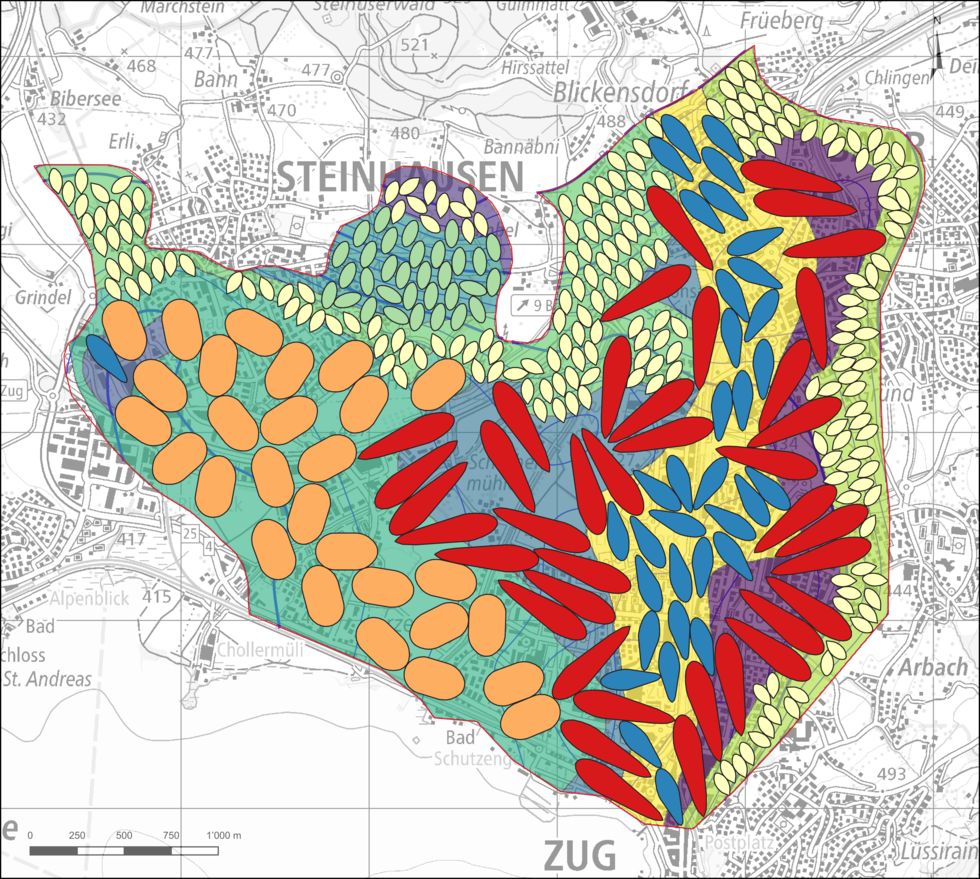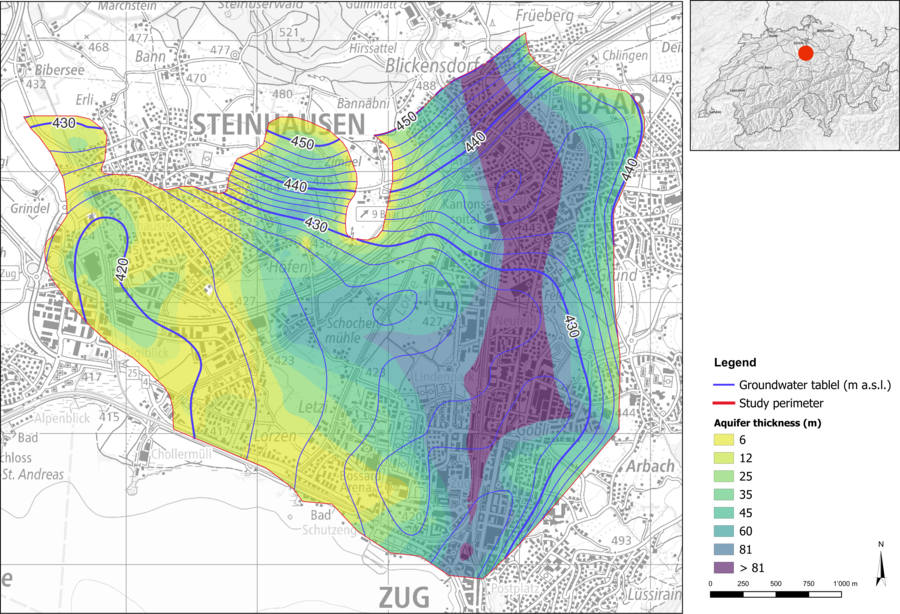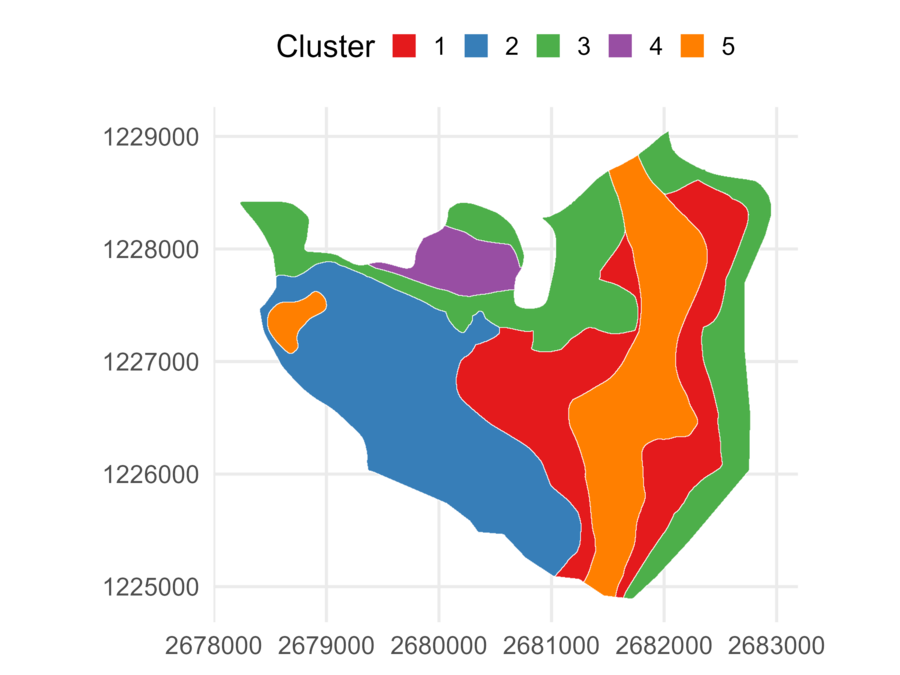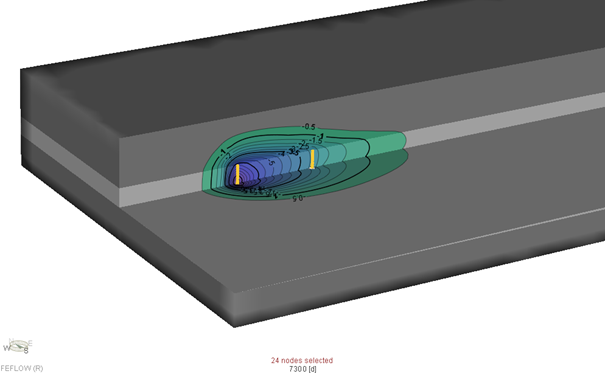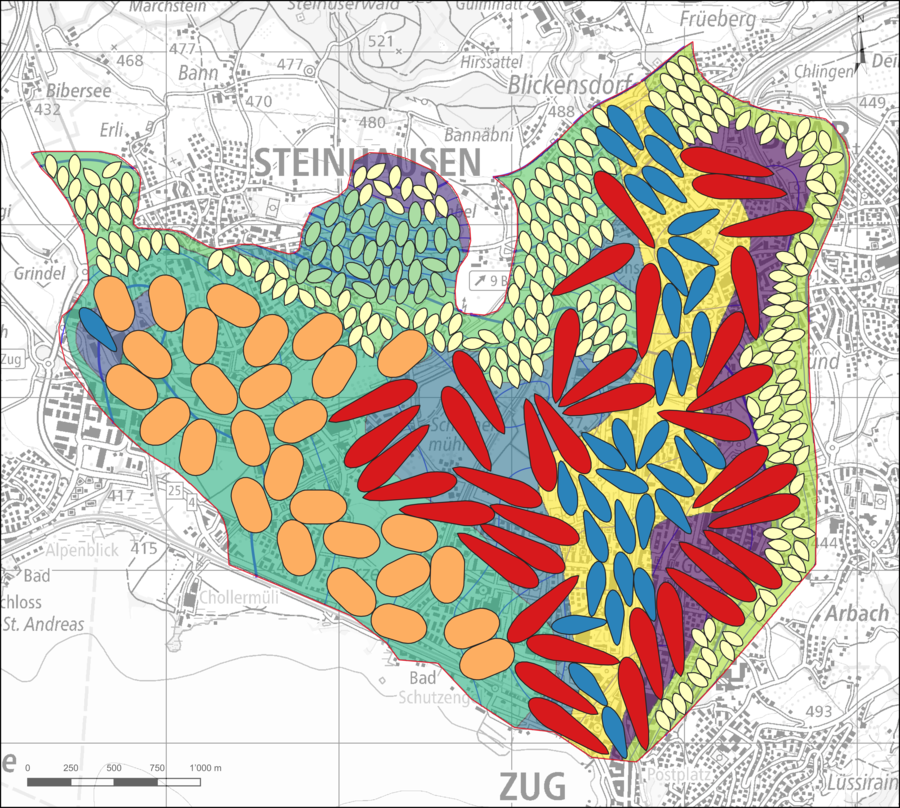Quantification of the heat utilisation potential of deeper groundwater resources
Baar/Zug/Steinhausen
47° 11′ 32″ N, 8° 29′ 47″ E
2024
Objektives
GEOTEST AG was commissioned by the Office for the Environment of the Canton of Zug to quantify the technical heat utilisation potential for open groundwater heat utilisation (doublet) systems based on the available hydrogeological data. The potential for seasonal heat storage (low-temperature aquifer thermal storage) also needed to be considered.
Methodology
To estimate the groundwater heat utilisation potential of deep groundwater, GEOTEST employees determine the maximum number of groundwater heat utilisation systems that can be installed within a study perimeter without significant mutual interference (thermal short-circuiting with a cascade effect) and without violating legal regulations (the temperature change caused by groundwater heat utilisation must not exceed 3 K within the 100 m downstream of the return wells).
It is assumed that there are no restrictions on the creation of utilisation points (e.g. existing infrastructure and usage restrictions are not considered). The determined value therefore corresponds to the maximum technical groundwater heat utilisation potential that can be achieved. This is determined, on the one hand, by the hydrogeological properties of the groundwater deposit, such as its thickness, hydraulic permeability, hydraulic gradient, and distance from the ground surface. On the other hand, the potential is influenced by the well arrangement and the energy load profiles.
In this study, the technical heat utilisation potential was determined for six different energy load profiles: small, medium and large energy requirements (apartment buildings, commercial and administrative buildings, office buildings), each with a balanced and an unbalanced version. These energy load profiles were taken from the Zyklos-study, in which GEOTEST was invited to participate. Depending on the hydrogeological conditions, the doublet wells were operated in a recirculating or bidirectional mode.
The potential is determined using numerical model calculations and simulations.
To significantly reduce the calculation time, the deep groundwater is classified into representative units (clusters). For each of these units, the three types of utilisation, with balanced and unbalanced energy load profiles, are simulated individually using 3D box models with homogeneous parameters and a constant hydraulic gradient.
The zone of hydraulic and thermal influence of each doublet well is estimated using the 0.1 K isotherm. It is assumed that no thermal cascade effects occur as long as the influence zones of the doublet wells do not overlap.
To estimate the technical potential in this study, the thermal influence zones of the open-loop systems were distributed to their corresponding areas in the Baar basin using a packing algorithm. This algorithm considers the direction of the hydraulic gradient and treats the influence zones of the open-loop systems as hard boundaries. The technical potential for each identified area in the Baar basin was determined for unbalanced and balanced energy load profiles.
Results
The simulations show that the efficiency of heat recovery depends heavily on the hydrogeological conditions and energy load profile. Heat recovery is more efficient with balanced load profiles.
The heat utilisation potential was calculated for various scenarios. The results indicate that the potential is greatest at higher capacities and with balanced energy load profiles. Overall, the installed capacity in the study area could be tripled without violating legal regulations.
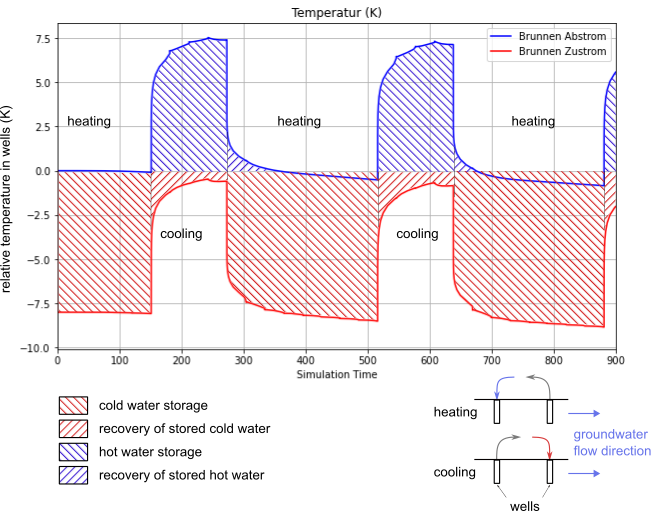
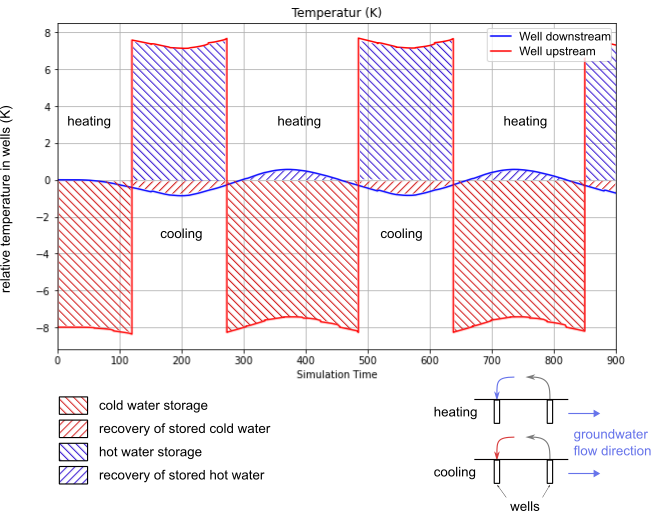
Schematic representation of the calculation of heat storage and recovery for bidirectional (top) and recirculating (bottom) utilisation.
Conclusion
The study shows that the heat utilisation potential of deep groundwater in the Baar basin is considerable and far from exhausted. The methodology used in the study is flexible and less computationally intensive than modelling all uses simultaneously. It takes into account the thermal cascade effect and groundwater flow paths and can be applied to other groundwater deposits. Future studies should involve quantifying the uncertainties of the determined potential and further investigating the trade-off between the size of the influence zone and the efficiency of heat recovery.
Originality and benefits of the method
The originality of the method lies in the combination of numerical simulations and a packing algorithm that determines the maximum number of systems that can be installed without resulting in thermal short circuits. This enables efficient quantification of the technical heat utilisation potential, which represents a sustainable use of deep groundwater for heat generation and storage. The method is flexible and can be applied to various groundwater deposits, making it a valuable tool for the planning and optimisation of heat storage systems.
Links:
Canton of Zug, Basis: A study of ‘Unteres Grundwasserstockwerk Baar/Zug/Steinhausen’
Federal Office of Energy, ‘Saisonale Wärmespeicherung im Grundwasser’, Zyklos study
See also:
GEOTEST, Münsingen pilot study on groundwater potential, https://www.geotest.ch/de/referenzen/geoinformatik-and-3d-modellierung/pilotstudie-zum-grundwasserpotenzial?highlight=m%C3%BCnsingen
Heat utilisation potential in loose-stone aquifers:
GeothermieSchweiz news article (including an interview with Pierre Christe): https://geothermie-schweiz.ch/neue-studie-energie-aus-grundwasser/
SFOE: https://www.bfe.admin.ch/bfe/en/home/supply/digitalization-and-geoinformation/geoinformation/geodata/water/potential-heat-use-of-groundwater.html
Geo.admin.ch: https://www.geo.admin.ch/de/datensatz-17052024
Geo.map.admin.ch: https://s.geo.admin.ch/icwtvk0p7qck

